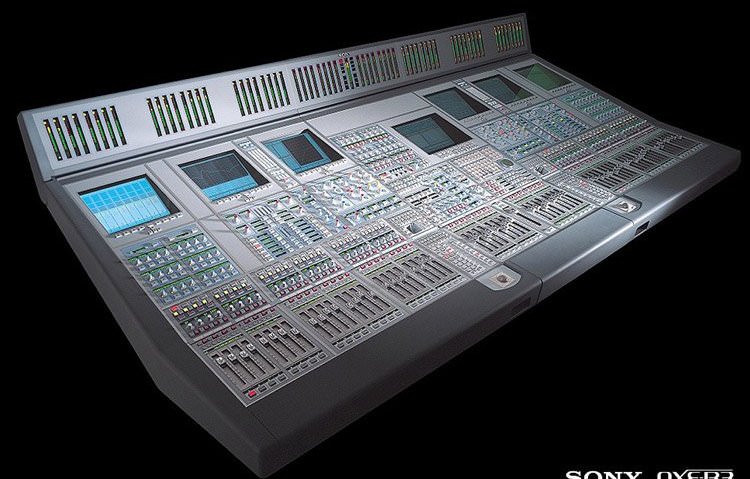Manley Massive Passive
When Manley Labs set out to develop a new equaliser, the design brief they set themselves was simple, but about as challenging as it gets: “make it as good as or better than a Pultec”. No small feat, and one which led to a seriously thorough development process (described at length in the Massive Passive’s surprisingly interesting manual).
The Massive Passive was released in 1999. A passive two-channel, four-band design with variable frequencies and bandwidth (Q) plus low-pass and high-pass filters, the unit was immediately hailed as a modern classic. The design proved equally as capable on individual drums or voices as it was on sub-mixes or when used for mastering.
The Massive Passive was immediately hailed as a modern classic.
What makes the Massive Passive so special? As Manley themselves explain, “there is no single reason why it sounds the way it does but more of a synergy of the advantages of passive EQ, the parallel topology, the tube/transformer amplifiers, the unique shelves and, of course, Manley’s construction style and use of premium components”.
The Massive Passive has won plaudits from just about everyone who’s used it. It even became such a popular choice in mastering studios that Manley introduced a special Mastering Version with detented knobs allowing for easier recall and more accurate channel matching.
Interestingly, despite its popularity, Matt Colton isn’t a fan. “The Massive Passive is very popular in UK cutting rooms,” he says, “but I find the character a little overwhelming on most recordings. When it works it adds a real scale and size to a recording, but for me more often than not it isn’t the right choice.”
Colton’s criticism is an interesting reminder that EQ choices are personal, not universal. If you don’t like the sound of a particular EQ, trust your ears and move on to something else. Just because others rate a particular model doesn’t mean you should force yourself to use it if you don’t like the sound. For those of us who do like it, Universal Audio’s officially licensed emulation offers a software version.


08.29 PM
I love you all.
08.53 PM
You missed KUSH! for higher, simply the best.
08.55 PM
PS I dot think you acknowledged that precision cuts are a different ballgame to those beautiful wide sweeps. Different tool.s.
09.00 PM
for me, Pultec for bass. Cambridge for tight cuts. and natives for gentleness. If that makes sense. Either way, keep up the good work.
09.29 PM
Maag?
03.01 AM
The most important Eq curve for dance music is the 24 or preferably 48 dB/Oct slope highpass filter. It allows producers with even average abilities to create low end and low mids that are complex and layered yet intelligible. Most producers I know have an Eq doing just this on good percentage of the tracks in every song. I’d say that for and EQ to truly be the EQ of dance music it would need to be able to not only do this but be available to do it on 10 or more (usually more) stereo tracks at the same time. This is where the humble native EQ in most daws shines with its low DSP rent high flexibility. It might not be the most glamorous or best sounding EQ but it might do more for the bass than even a pair of hardware pultec or even a gaggle of dsp pultecs. Add in its pre and post internal spectrum analyzer and it seems pretty amazing.
04.25 PM
I Love the IK Pulteq, it just makes most things sound better. Too easy to get carried away with it though.
06.48 PM
Just some notes on availability of these EQs as emulations. Both the API 500 series and Sonnox Oxford have officially licenced plug-in versions from Universal Audio.
http://www.uaudio.com/store/equalizers/api-500-series-eq-collection.html
http://www.uaudio.com/store/equalizers/oxford-eq.html
04.14 AM
KEEP up the phenomenal work guys!
10.16 AM
I own a clariphonic myself, and I don’t think there’s a better eq to focus and lift the highs on your 2-buss. Personally, I’m getting ready to sell my SSL E-series EQs so that I can pickup an Electra from Kush…
He’s doing it right.
11.59 AM
Awesome magazne with loads of very useful tricks and insights for the general producing general producers that just don’t have the means to approach music with real world professional knowledge. Very grateful and wish you a continuesly sucessful and quality ensured publication of such! 100% support :)
06.41 PM
Um how there is no baxendall eq here is just beyond me. The most used and useful eq of all time. Didn’t get a look in.
02.54 AM
Kush isn’t a secret anymore, the word is out. The best, most intuitive and creative EQ and Compressor I’ve ever used. Slow to upgrade completely to AAX, but worth the wait.
01.10 PM
Oh .. I love SSL EQ man ! its the amazing shit u can ever get 😀
12.54 AM
what about the millennia NSEQ-2, the GML 8200 and Maselec Mea 2 ? (there’s also the Crane IBIS)
06.12 AM
That mackie EQ is fucking shite, I can’t believe you put that next to the SSL, which is the mutt’s nuts.
02.00 AM
I use the 5500 in my mastering rig everyday. It’s stellar for fast program, passes every transient perfectly. Big bold sound. Not what I would call transparent but perfect for electronic music.
Will Brodeur
lacquer channel mastering.
10.33 PM
Elysia Xpressor is one notable absence from this list… the Elysia stuff is practically made for electronic music, so clean and precise.
06.03 AM
So why you not tell anything about NEVE EQ’s?